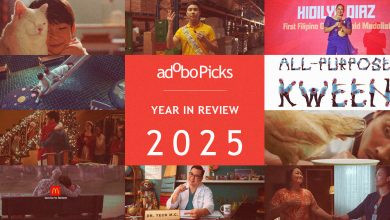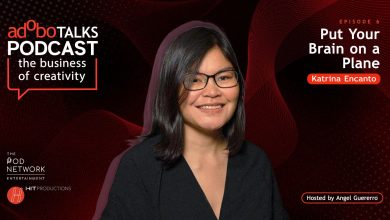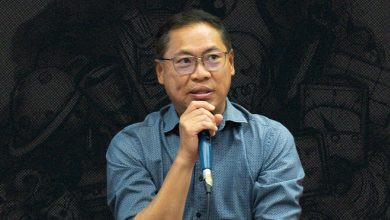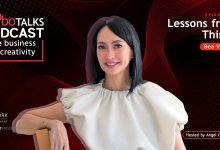MANILA, PHILIPPINES — The COVID-19 pandemic ushered disruption within the industry—yet the most remarkable marketers are the ones leading their brands with resilience and courage, as they rise above the times and usher innovation and creativity in their strategies and decision-making.
adobo Magazine presents Meet the Remarkable Marketers: A CMO Series 2021, where we feature some of the most fearless, agile, and exemplary brand leaders as they provide inspiration, insights, and key learnings that have shaped their business —from surpassing industry benchmarks and launching creatively effective campaigns, to initiating best practices as they navigated through uncertain times.
With over 20 years of marketing experience under her belt, Kathy Carag, Division Vice President for Marketing of UL Skin Sciences Inc. oversees the personal care company’s brand marketing, corporate branding, marketing operations, and eCommerce units.
Leveraging her experience leading brands that span different lifecycles, Kathy continues to be passionate in using relevant consumer insights and platforms to build and strengthen brands even in times of crisis.
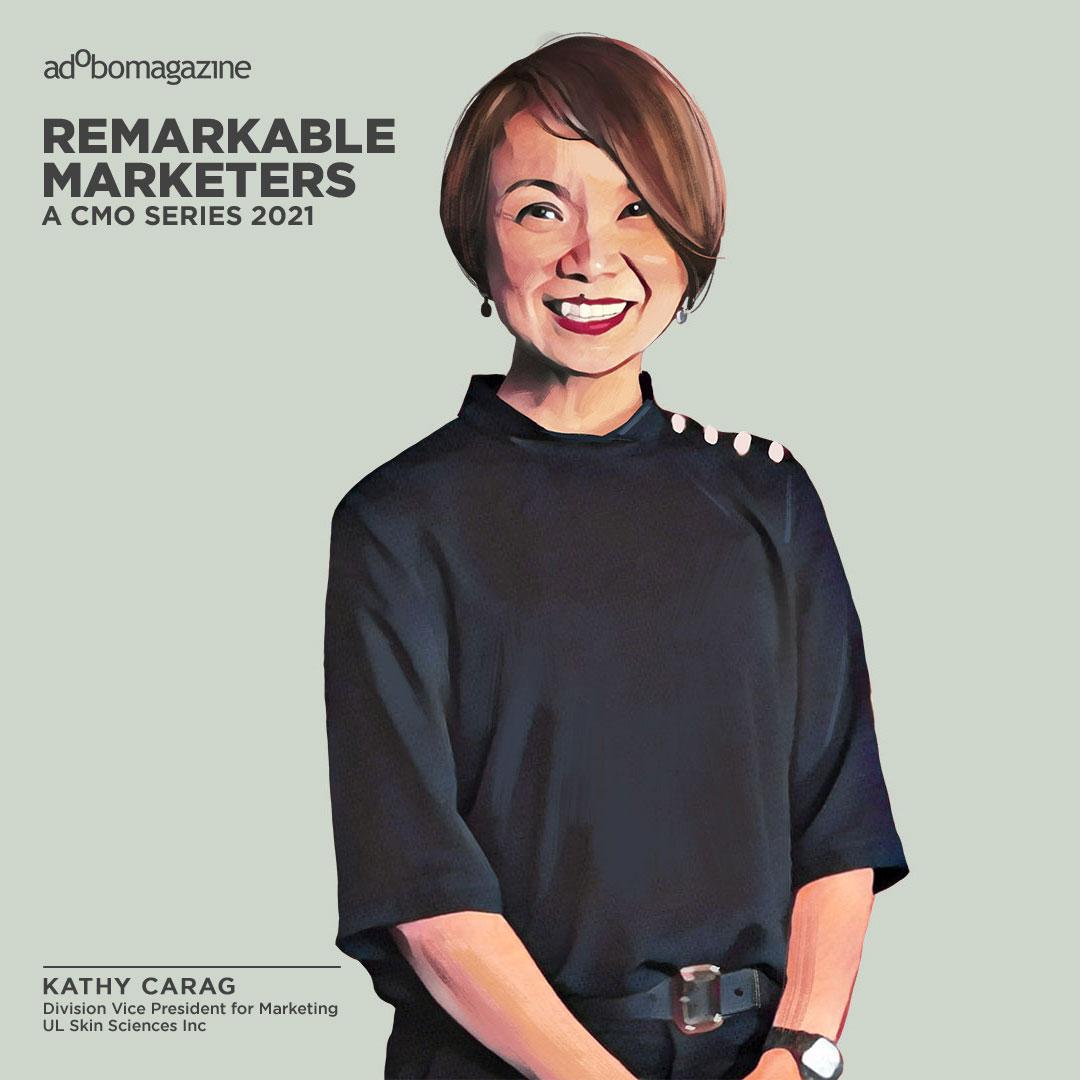
What has been the most disruptive part of the pandemic cycle in your role as marketer and what did you have to immediately address to fortify your brand’s foothold in the market?
For marketers like myself, dealing with the different unknowns especially at the start of the pandemic was certainly the most disruptive. In the first few months of the pandemic, we had to immediately review all our communications because we had to make sure that our brands continued to be relevant and credible to our consumers, and even a source of help when possible.
Since ULSSI’s brands are centered on health-based beauty and personal care, we were confident that our products could genuinely help our consumers during this time of personal uncertainties.
In terms of marketing budgets and brand investments, what were the shifts you made in terms of marketing efforts and media channels to reach your digitally-connected, at-home customers?(How much were invested in CSR or COVID aid, if this is relevant?)
The closure of ABS CBN last year added to the “pandemic disruption” since a huge platform for mass market reach was taken out, shifting both our media and content strategies almost overnight.
- First – Cross-media reach, combining TV & Digital media, became a critical component of our media plans to hit our top funnel objectives. Along with reach, we also had to improve viewability and engagement on Digital- hence, we had to make sure all our digital assets played a role in our campaigns.
- Second – We sharpened how we executed our mid-funnel efforts, particularly on influencer marketing, by being more focused on metrics and balancing influencer content with brand messaging.
- and Third – as shopping behavior began to shift online, we also improved our understanding of what drives conversion, and consequently increased our investments in performance marketing.
To realize your need to manage this cataclysmic shift, what do you expect from your partner advertising, media, PR agencies and how does this differ from the pre-pandemic period? How are you structuring for the uncertainties ahead? (Could you tell us which advertising agencies, media agencies, and other vendors you currently working with and their brand assignments?)
The pandemic certainly rewrote the playbook on what we expect out of our agencies. In the pre-pandemic period, the roles of the agencies were more defined – a brand’s main agency defined the big idea and produced the main tri-media materials, the digital agency converted these into digital assets, the media agency planned for our reach and other media objectives, and the PR agencies amplified our above the line messages via live events, PR seeding to influencers, and press articles.
Now, with more variety in cross-media consumption and a “shorter trip down the funnel”
(e.g. consumers can be hit by an awareness ad, and decide to buy the product right there),
there is an increased expectation, for our agencies to develop more integrated campaigns that show an enhanced understanding of the consumer funnel.
In addition, given the disruptions on media platforms and content, we want to have a deeper understanding of the effectiveness of our campaigns particularly those in the mid-to-bottom funnel. Hence we now expect more metrics-driven KPIs particularly from traditionally equity-driven programs such as PR initiatives.
Intelligence, insights, and real-time data gathering are essential to your marketing decisions, more so than any other time. What are you on the lookout for?
In ULSSI, we are sticklers in using data to drive decisions. Prior to the start of the pandemic, we already began building our own Marketing Data Dashboard to give us topline metrics of digital campaigns –which include effectiveness and efficiency metrics for awareness, consideration, and conversion. We also set up an Influencer Marketing Platform that allowed us to see profiles of the nominated influencers by our agencies to vet them, and to set up campaigns in the platform with the chosen influencers so that we could monitor and even measure the campaign ROI based on various metrics. Being able to quickly see the data enables us to adjust our campaigns (even while implementation is ongoing) and mine various insights that we could apply to future campaigns or simply as planning input.
Your thoughts on the surge of brand purpose and cause-related advertising to an often skeptical consumer.
Consumers do expect a lot from brands, especially those that they use or know well. I feel that brands cannot simply come out with purpose-related messaging just to be relevant to their consumers. Consumers are now very discerning, they are exposed to a lot of content, and will not hesitate to call out brands that either cross the line or are deemed insincere.
Hence, Brands need to be credible champions of these causes, and should commit to that
purpose.
For our feminine care brand PH Care, feminine care education is something we deeply care about. In 2020, we launched this material to advocate for open discussion about feminine care to promote proper care and hygiene.
As we delved more on this topic, we found out that 6 out of 10 young Filipino girls (aged 16 to 25 years old) were not sure how to properly care for their feminine area. Hence in 2021, we leveled up our advocacy from simply encouraging open discussions, to bringing feminine care education closer to Filipinas by partnering with Edukasyon.ph.
We recognized that as a taboo topic, notions about feminine care are clouded by myths and misinformation. As the leading Feminine Wash in the country PH Care’s advocacy evolved to ensure that adolescent Filipinas grow up with proper body knowledge. Along with Edukasyon.ph, we offered a fun, engaging, and educational experience online that does not only teach users about proper feminine hygiene, but also assures them that they are not alone in their experiences growing up.
Do share some of the campaigns and case studies to showcase your brand efforts that exemplifies creative effectiveness. Please provide us with a brief description of the campaign.
Here are two examples of campaigns in 2020 that were able to effectively use communication vectors to reach its brand objectives, and consequently these campaigns won in our internal Blaze Marketing Excellence awards.
Project Luxe from GynePro:
The campaign aimed to make the brand stand out from competitors, delivering an empowering message to its target audience.
As a result, the brand gained an increased market share and a stronger brand equity driven by its key promise.
from
This awareness campaign delivered a powerful message along with striking visuals, empowering its female target audience, delivering stellar business output as a result.
What are the greatest work and life lessons you have learnt from the past year?
One lesson I have learned over the past year, which applies to both life and work, is – “When things go out of control, the only thing you can control is yourself”. I have had many team meetings where the key question I would ask is – “Okay, what can we control then? Let’s fix THAT.” From a life standpoint, the only thing I can control is myself – how I react and deal with all that is thrown at me. During this crisis, I have lost some, but gained much- and for all that I have gained, I am grateful.
How do you foresee 2022 and what do you anticipate will be the emerging trends? Do you feel ready to take it on?
For the industry where I belong in (beauty and personal care), the road will still be tough. Consumer behavior for self-care and beauty motivations will still not reach pre-pandemic levels. However, there are green shoots – vaccination rates will certainly improve and income will go up as elections draw near, both of which will, in turn drive spending. Trends on bacterial protection and health-based/wellness products will continue, and our brands will be ready to take on these trends since our products are grounded on health-based benefits. The trend on online consumption behavior (shopping, content consumption, etc.) will not only continue but shall soon become permanent, and we are certainly preparing ourselves for this shift as well.
That said, the confidence to live with the virus endemically, will be the real end-game. In 2022, this may not be present yet. Once people begin to feel more confident that being sick with Covid is just like “having the flu” then we would all be able to peacefully co-exist with the virus, and hence consumers will start to settle down from “survival mode” to more carefree behaviors that would benefit the personal care industry.
On wellness, how do you take care of yourself and find that white space in this all-consuming, digitally-connected world? Give us a few tips.
Personally, I am a big wellness advocate. I began taking vitamins well before I joined UL Skin Sciences and the United Health Group. My daily vitamin menu includes Fortima for immunity, Myra Ultimate for skin health & as antioxidant boost, Calciumade for strong bones & vitamin D, collagen with glucosamine for my runner’s knees, and probiotics for gut health.
I have also been running consistently for more than a decade, and have now mixed running with lots of stretching & some strength training. Dedicating that hour or so for exercise is my escape from the world. I have often said I’ve composed powerpoint decks in my head while running, and I even pray the rosary! Exercise allows you to disconnect, gives you a lot of happy hormones, and it’s healthy too. More than ever, in a world that you can’t control, taking care of yourself and your body is all within your control, so I plan to give it the best care.
Lastly, the best way to disconnect is spending time with family. I’m sure many parents echo the advantages of a WFH setup when it comes to quality time with family members. My lunch break conversations with my daughters in senior high and in grade school are truly precious.
Listening to their stories makes me see the world differently from mine, and it brings me to a world of discovery and pure joy.




